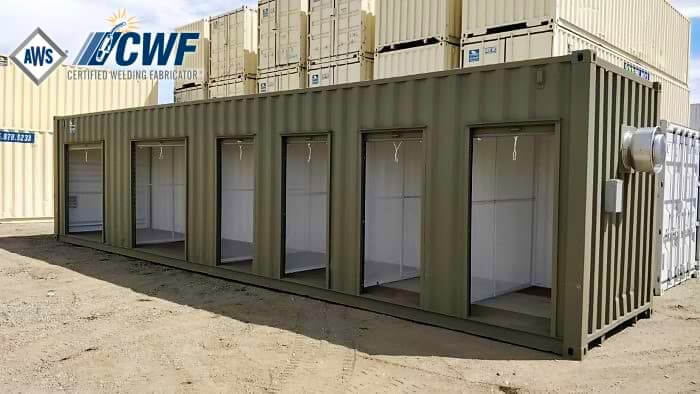Management Companies provide the service to run, and sometimes startup, your self-storage business. This is a popular choice for people who want to simply receive a check every month while their investment appreciates without putting their time into the business—people like hedge fund managers, lawyers, doctors and the retiree who put his/her life savings into the facility and wants it to fund retirement.
The sales pitch for the management company is quite attractive,
“We will provide our expertise, employees, training, financial reporting, marketing strategy, website, compliance and on-going supervision in exchange for 5% of gross income vs. $1,500 per month. We have a proven track record of success—hundreds of facilities with not one failure. Our income is attached to your income, so our success is attached to your success.”
Although the pitch is mostly true, you should be aware of the limits and pitfalls of having a management company manage your facility. The management company business model places inherent limitations on how much effort they are willing to put into running your storage facility, and the level of integrity with which they do their job. Working with one might still be the best option for you, but you should know what to expect and enter the contract with your eyes wide open.
The number 1 thing you need to know about management companies is their priority is to maximize their net income and promote their brand. They will Maximize gross income from your facility, but they will shift the expense of that increase to you. Protecting your net income is an expense to them—an expense they are unwilling to pay. As such, they maximize their net income at the expense of your net income. Fundamentally, they do this by compensating for inadequacies in what they provide by hiring 3rd party companies with your money. Even though gross income, and thus their income increases, your net income suffers. A management company will typically generate, for a medium-size facility, about $30,000 per year (10% gross) in hidden costs that eat away at your net income.
If you’re a hedge fund manager who’s desperate for a place to invest money and own dozens of facilities, you probably don’t care—even though this could add up to millions of dollars wasted per year. If you are a retiree and have just one facility, you probably do care. This article is written more for the latter and will highlight how management companies shift hidden expenses, enlighten you as to what to expect from a management company, and provide guidance as to what to look for in a good management company.
White Lie number 1 “We have a track record of success.”
Yes, they most likely have many successful facilities in their portfolio. However, when one of their own facilities fails, they sell it. When they are contracted to manage a facility that is failing, they are fired. As such, their failures disappear from the portfolio. Catastrophic failures happen more often than you would think. There is a strong secondary market for purchasing loans in default. The SBA will no longer guarantee a loan, because of numerous defaulted loans, for people who rely on a management company to run the business.
White Lie number 2 “Our success is attached to your success.”
Do management companies want your facility to gross lots of money and subsequently provide a reliable revenue stream? Of course—as long as they don’t spend their resources to achieve it. There is a limit to how much effort they will put into your facility. This brings us to the next section where you will see how management companies maximize their net income by shifting hidden expenses to you thereby diminishing your net income.
Office Training:
The level of office training you should expect from a management company is they will advertise, acquire, interview and hire employees. They will provide an employee handbook and teach management company policies and procedures. Employee payroll and compliance will be handled by a 3rd party company at your expense. Office personnel will be trained to adequately use the P.O.S. software and provide specific reports if they can’t be acquired remotely. They will be given a script with an objection/response section. The totality of customer interactions will be about following a script and company policies with no regard for special circumstances.
What’s Missing: The typical mock phone calls and emphasis on delivery of the sales message or customer service is absent. Delivery determines customer experience—even when the customer doesn’t like the message. Training on security systems, access control and camera systems is typically absent or insufficient to be useful. If the management company owns facilities in your area, they will reserve the best candidates for themselves and hire the others for your facility. They won’t fire anyone. An owner hired me to audit a facility after the facility manager passed out, drunk, and wrecked a golf cart into the entry gate. It turned out he got pass-out drunk everyday for months prior and the management company either didn’t know or didn’t care–either is a condemnation of the management company. The only reason this came to light is because the OWNER investigated the gate incident.
They will recommend a company, which they sometimes own, to call and evaluate your office staff—at your expense. What they don’t tell you is no supervisors will listen to and take action on these evaluations. The evaluations are based on following the script and made by minimum wage earners who never spent a day working at a storage facility. Bottom line is they provide minimally trained corporate robots who receive little-to-no supervision or accountability. The employees are loyal to the management company—not the owner. As such, they will make decisions to the benefit of the management company at the expense of the owner.
Maintenance Training:
Maintenance personnel should actually maintain and fix things as required, unless the fix REQUIRES a contractor. Interviewing a maintenance candidate requires hands-on maintenance experience—something the interviewers almost never have. Instead they rely entirely on what the candidate put in their resume and match it against a list of desired qualifications. Once hired, their supervisors almost never have the experience to supervise maintenance. The company will not spend any resources to ensure proper maintenance scheduling, supervision, inspection or accountability. Consequently, instead of training and oversight to ensure a well-maintained property (their expense), they will wait until there is a problem, or an owner complaint, and then call a contractor to fix it – at YOUR expense. Meanwhile you pay a maintenance tech to sit in the office and flirt/gossip with the office manager. It is possible good personnel get hired and do their job with impeccable integrity despite an absence of supervision or care, but it would be pure luck.
Another hidden fee pops up when a contractor is called. Management companies will have a list of “preferred vendors” they will recommend or simply call if you give them carte blanche. Unfortunately for you, these contractors often became preferred vendors by giving a kick back to the management company and often they do sub-par work at above market prices. They will also typically sell unnecessary work and the management company will OK it without any question. Why? Because you are an expense so they spend NONE of their time and resources to save you money or ensure quality service.
Financial Reporting
Financial reporting is typically spot-on. You can count on reports that will satisfy any investor or banker. The reports will give you a view of your business from multiple angles. This is important because different types of theft or poor office practices will throw a red flag on different reports. Unfortunately the nobody in the management company reads the reports. Owners typically don’t know where to look for the red flags, how to recognize them or what they indicate. Although the reports are all-inclusive and prepared with impeccable integrity, employees can still rob you blind–a not uncommon occurrence. Similarly the opportunity to use the reports for marketing and business strategy is also lost.
Marketing:
New move-ins are a function of how many times the phone rings and conversion rate– % of rings that turn into money. Instead of spending the time to properly recruit and train office staff (maximize conversion rate–THEIR expense), they will compensate with spending more of YOUR money on marketing (maximize phone rings). Let’s say the goal is to achieve 70 new move-ins per month. Instead of converting 70% of 100 calls with quality employees, they use advertising to double the calls and convert 30% of 250 calls with mediocre employees.
One must analyze market data in order to get the most bang for your advertising buck. They will tell you they are advertising experts and know exactly what works and they will bring that to your facility. They then proceed to do what they do everywhere else while spending as much money as you let them – not necessarily a bad first step. However, they make no attempt to track or analyze the effectiveness of that advertising, nor identify population inside your marketing area that are not being reached. Why? Advertising is YOUR expense, while analyzing and optimizing is THEIR expense. With a management company you will ALWAYS pay more for advertising than you need to because some of the advertising will always be ineffective or reach the wrong markets. They have no problem spending $10,000 of your money to drive $2,000 gross income. Some will even hire 3rd party companies, which they own, and give you subpar service.
They will always have a company website and will offer for free, or a small fee, a page for your facility on their website. The pitch is that it will be integrated with the POS software and allow reservations and rentals online, and you will benefit from the SEO advantages that comes with being associated with their big company. This looks good on the surface because it saves you from spending $3,000 for a functional website, plus their fee will include some kind of SEO optimization or web marketing. The truth is they do this to use your investment to promote their brand, and to direct all web traffic through that site thus making you dependent on them because you can’t leave them without losing 80% of your new customer traffic—at least temporarily. ALWAYS develop your own website with your domain name so you own the pipeline through which your customers flow. Part of what you pay for the POS software is for the software company to coordinate with your web designer to integrate rental and reservation ability into ANY website—the management company is just offering what you already own.
Nine times out of ten a management company will not run your facility into the ground and cause a loan default—if they are average or better. You will receive checks with little to no effort. If you’re a new facility owner or never ran one yourself, then you will be oblivious to how much of your money they are wasting while watching your occupancy increase. It’s possible you will be quite happy with them. Caution- the odds of a management company running your business into the ground increases significantly if your facility is not in a major metropolitan city.
It’s NOT NECESSARY to throw away your money and put your investment into the hands of a competitor (management company). Harrison Bauer can train you and setup up your facility to be managed using about 10 hours/month of your time. If you have 3 or more facilities, he can train one or more people to work as independent contractors and manage your facilities for a small fraction of what you pay management companies AND every decision made will be to maximize YOUR net income and promote YOUR brand. Click here to contact Harrison and receive a free consultation.




